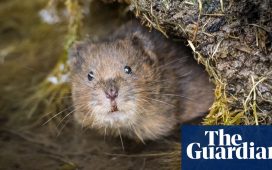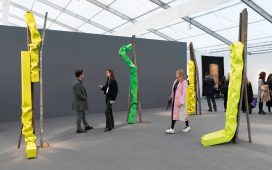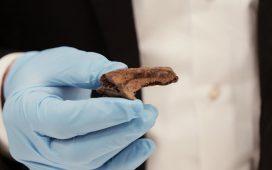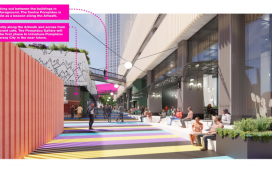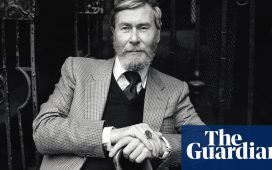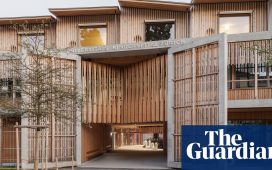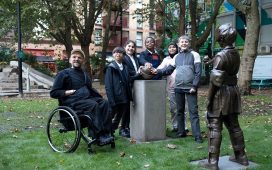From New York to Kabul, photojournalist Adam Ferguson made a career documenting other people’s countries. It led him back home, to capture a side of contemporary Australia you won’t see in Crocodile Dundee.
When Ferguson started taking portraits around Australia in 2013, people would occasionally ask him where he was from. He grew up in Dubbo, but his years as a US-based photojournalist for the New Yorker, Time, National Geographic and the New York Times had apparently sanded the strine from his accent. He had been asking himself similar kinds of questions – about his place in the world, and the stories his camera captured.
-
Chairs secured from flooding, Iningai Country, Lake Huffer Station, Queensland, 2017.
“I started to feel like I was quite disconnected as an expat living overseas,” Ferguson says. “At some point I felt like I had a bit of … a crisis might be dramatic, but I just started to lose my sense of identity.”
Over the next decade he continued to venture further into the continent that was, on paper, his home. With camera in hand, Ferguson would travel from a “super pit” goldmine in Kalgoorlie, on Wangkatha Country, to the Broken Hill Correctional Centre, on Wilyakali Country, to the almond plantations of Robinvale, on Latje Latje Country. His “ultimate intention” was to “reframe, and make a contemporary portrait, of ‘the bush’ that I hadn’t seen before”, His new monograph, Big Sky, collects a decade of photography that Ferguson hopes disrupts the familiar and – at times – reductive representations of regional Australia seen across the political and media landscape.
-
Sheep are fed with bought feed during drought, Weilwan Country, Epping Farm, Pilliga, New South Wales, 2018.
Ferguson’s medium format film camera lingers on a young cattle worker posing tentatively in front of a grove of pink bougainvillaea; a drag queen under a Hills Hoist preparing for a Priscilla: Queen of the Desert tribute show; and a pair of young Aboriginal women in Taylor Swift T-shirts looking out over Wadeye, in the Northern Territory. Many of Ferguson’s portraits invoke and subvert well-worn national iconography familiar from Wake in Fright to Baz Luhrmann’s Australia. “One of the things I’ve tried to do in my work is find archetypal Australian characters, like drovers, roo shooters, things that have been packed up in popular culture.”
That led him to Billy Skinner, a drover who he first met in 2018, and kept running into. “He only ever called me ‘Kodak’, he’d never call me Adam,” Ferguson says. Watching men like Skinner at work, it occurred to Ferguson that a 21st-century drover’s life is a long way from Clancy of the Overflow. Today, their work is shaped by climate change, hired by farmers to move stock around to less drought-stricken feeding grounds.
“Many of the farmers I encountered don’t believe in climate change, the vast majority,” Ferguson says. “But the reality is the modern iteration of the classic drover archetype isn’t moving cattle around for transport – it’s for weather patterns.”
-
Billy Skinner, drover, Koa Country, Winton, Queensland, 2022.
With Skinner’s Akubra cast to the ground, Ferguson’s 2022 shot of the denim-clad stockman tenderly holding his face to his horse’s neck subverts the archetype of a heroic horseman sitting high in the saddle. “He literally lives in a trailer on a stock route for the majority of the year, and lives with these horses and sleeps next to cattle. His whole existence comes from looking after cows, on the back of a horse, and occasionally a motorbike. I wanted to show the relationship to that horse, that kind of intimacy.”
Ferguson was similarly drawn to the mythic figure of the sheep shearer, but his shirtless portraits of tattooed 30-year-old contract shearer Conan Wakefield and his 50-year-old father, George Smith, deliberately pushes back against the old romance of the shearing shed. “It didn’t matter what I did, it just felt like I was making an image that we’d already seen,” Ferguson says of his initial attempts to capture the men at work. “And that was beautiful, in a sense, [but] I wanted to veer away from that. Now, shearers are itinerant workers, and the industry’s nowhere as big as it used to be.”
-
Conan Wakefield, shearer, Iningai Country, Marchmont Station, Queensland, 2017.
At times, Ferguson’s work documenting drought and bushfire saw him meet the challenges of climate change almost literally head-on. One of the more recent photographs was taken in Pyramul, on Wiradjuri Country, in 2023, of a burnt-out truck in a field still smoking from the fire that had just swept through. “Half an hour before I took that photo I watched the fire come down, me and the [Rural Fire Service] guys. There was only one road in and out, and we had to gather in a paddock and get ready to watch a fire front rip through us. Everyone got really nervous, and we were all there bracing for it. Then, at the last minute, the wind had changed, and it moved north.”
Conscious that he was far from the first white man with a camera to document the continent’s interior, Ferguson also took care to give his subjects agency and avoid reinforcing stereotypes or tropes – including gaining approval from elders for images depicting First Nations communities.
-
Kooringle farm after a bushfire an hour earlier on Sallys Flat Road, Wiradjuri Country, Pyramul, New South Wales, 2023,
“The very process of photography is steeped in all kinds of colonial complexities. The thing that I really tried to do is make images that empower people, or depicted people in a way that gave us dignity and agency.”
One striking image sees Pastor Simon Dixon, a Pintupi-Luritja and Lutheran priest, standing arms outstretched in front of the rolling hills of Ikuntji/Haast Bluff, Arrernte Country, the colours straight out of an Albert Namatjira watercolour. Ferguson had met the pastor months earlier, and envisioned taking his portrait out on Country in the vestments of a coloniser’s religion. But the pastor had other plans first.
-
Pintupi-Luritja Lutheran pastor Simon Dixon, Ikuntji/Haast Bluff, Arrernte Country, Northern Territory, 2023.
“I sat after church service in the morning, slept in my Land Cruiser for most of the day, because the light was crap and I knew I wanted to do it in afternoon light. And then, at the time we decided to shoot, Pastor Simon comes out and says, ‘Oh, we’re going hunting’.
“So I jumped in the car with him and a few of these fellas, and we went hunting. We got back half an hour before sundown, and he was like, ‘Let’s do it’.” After a frantic 20-minute drive, Pastor Simon had led Ferguson to the perfect spot with moments of light left. “The sun went away and I was like, ‘Hopefully I got it’,” Ferguson says, in an accent that is, once again, unmistakably Australian.
The final portrait is a poignant lesson in having a bit of faith. But, like the rest of Ferguson’s work, it’s a complicated picture.

